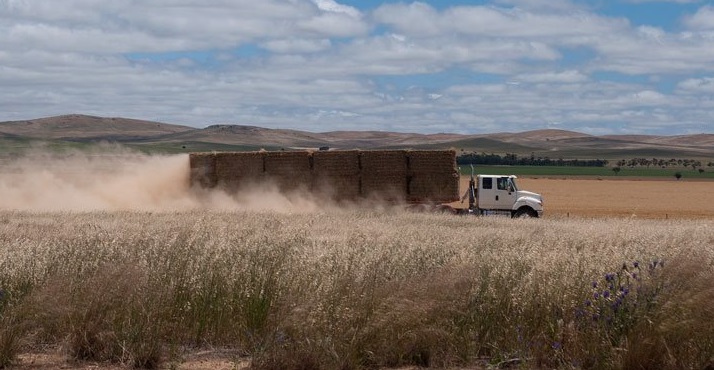
Hay demand has slowed, but the rebuilding of the nation’s stocks needs to be planned.
SPRING fodder harvest plans should be implemented to help rebuild the nation’s hay stock despite a tempering in demand and prices, according to the industry’s peak body.
The Australian Fodder Industry Association said widespread rain has slowed the fodder market, as graziers take advantage of homegrown feed or agistment, and now is the time to plan for the spring fodder harvest.
AFIA chief executive officer John McKew said the recent tempering of the hay market would help realign market supply and demand.
“Widespread, near drought-breaking rains has relieved the pressure on both sides of the hay market.
“This rain has provided many hay industry customers with the confidence to restock and strengthen their businesses, this is all good news for the future of the fodder industry,” he said.
Mr McRae said with some regions recording their best autumn break for more than a decade, he encouraged people to think to the future and consider fodder as part of their drought mitigation strategy.
“It really is the time to think forward to spring, what silage and hay could I make? How will I be able to maintain the quality of the stored feed for years to come?,” he said.
“If there is a lot of fodder around, we must be smart about storing it.
“Pit silage is a way to preserve feed for many years,” Mr McRae said.
Mr McRae said timely rain in Queensland was keeping local contractors and farmers busy harvesting forage sorghum and pasture.
In NSW, farmers who had to destock due to the drought have been offering their fresh pasture as agistment. This comes as demand for hay has dropped-off due to improved seasonal conditions. Rainfall was reflected in hay prices at the end of February, with all categories of hay recording price decreases.
The most predominate price declines were throughout New South Wales and Queensland. An example was a price fall of almost 50 per cent for pasture hay delivered to Queensland’s Darling Downs, according to the latest AFIA Hay Report.
The price of hay in other regions dropped slightly into March, but values in most regions for all varieties of hay has remained steady since.
Source: AFIA.

HAVE YOUR SAY